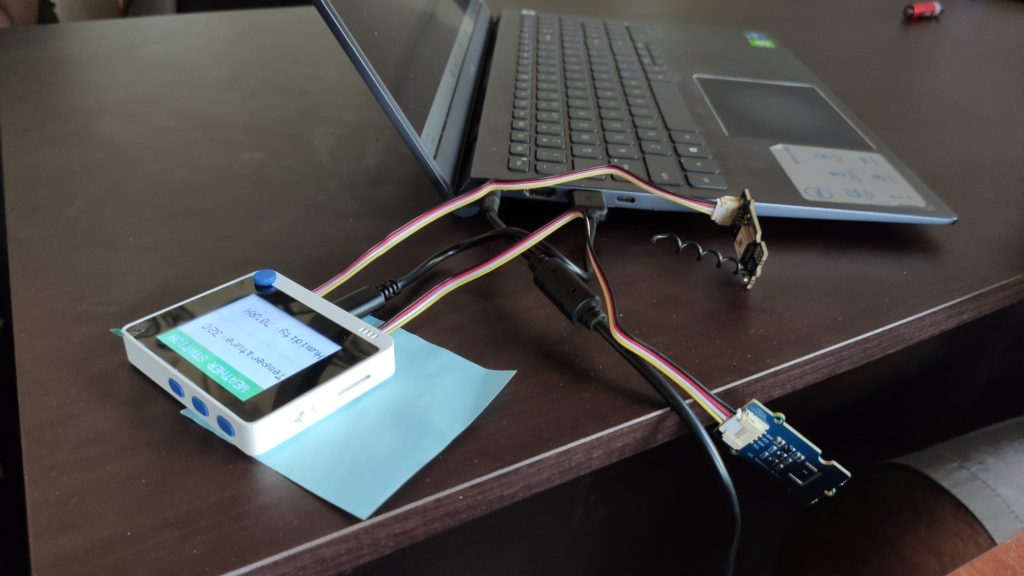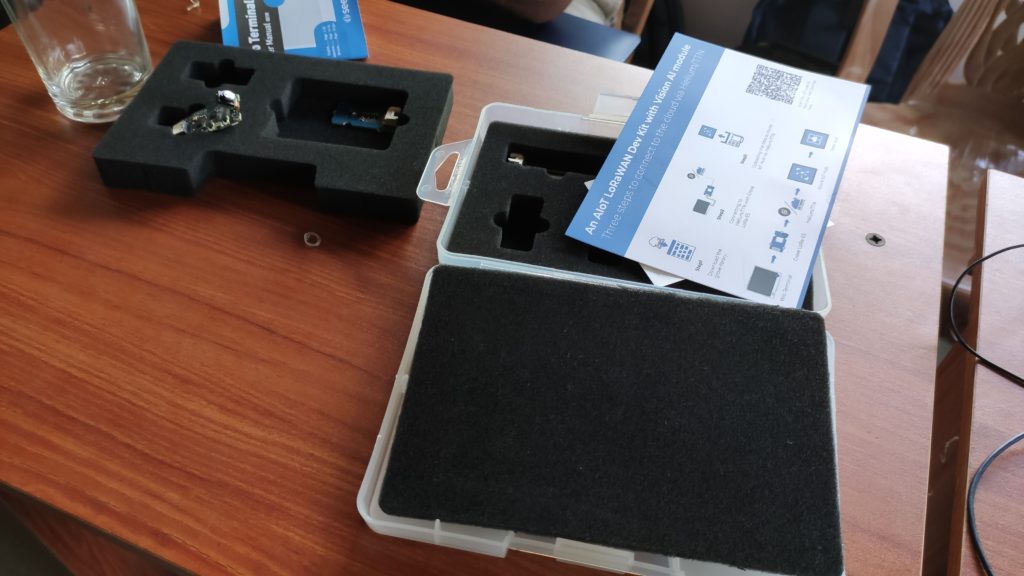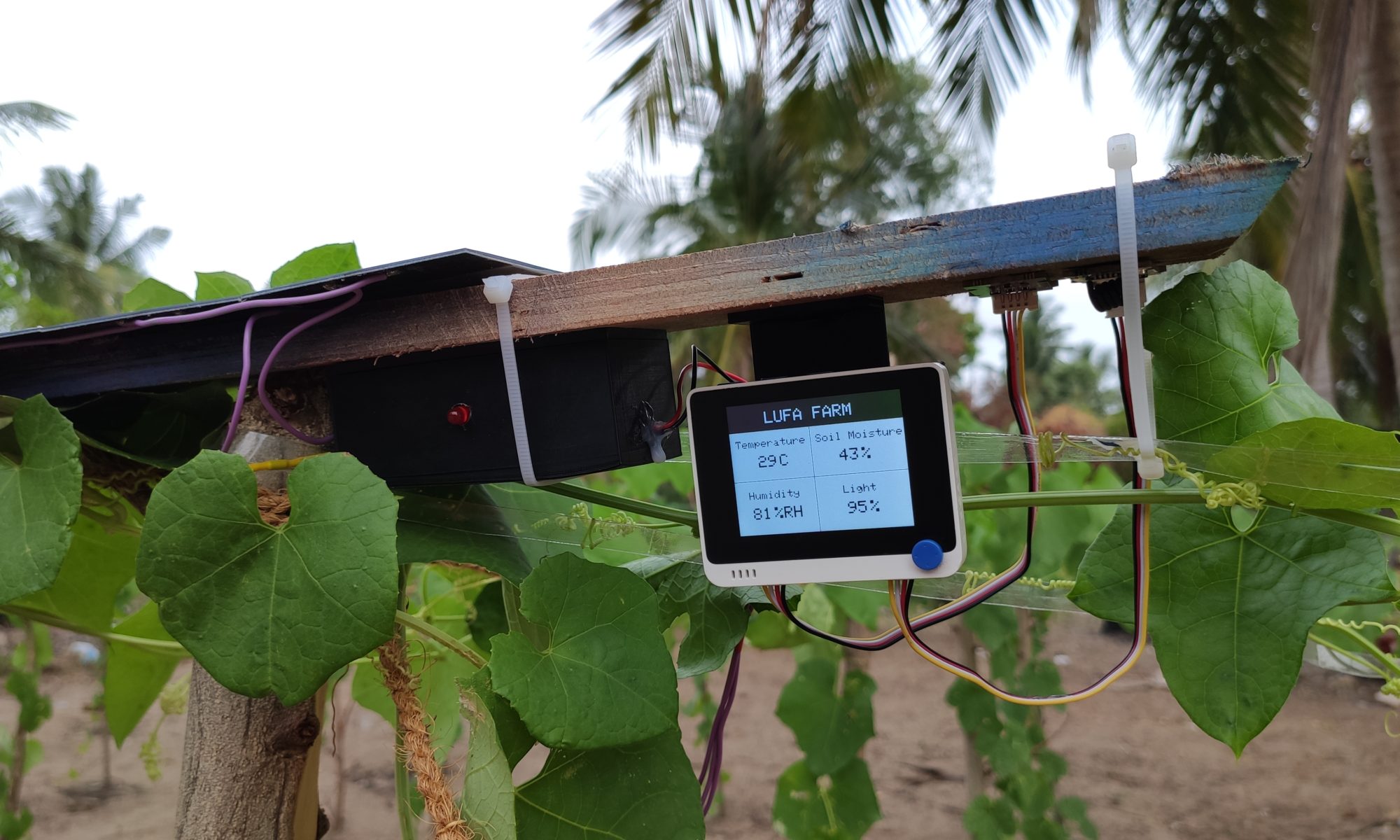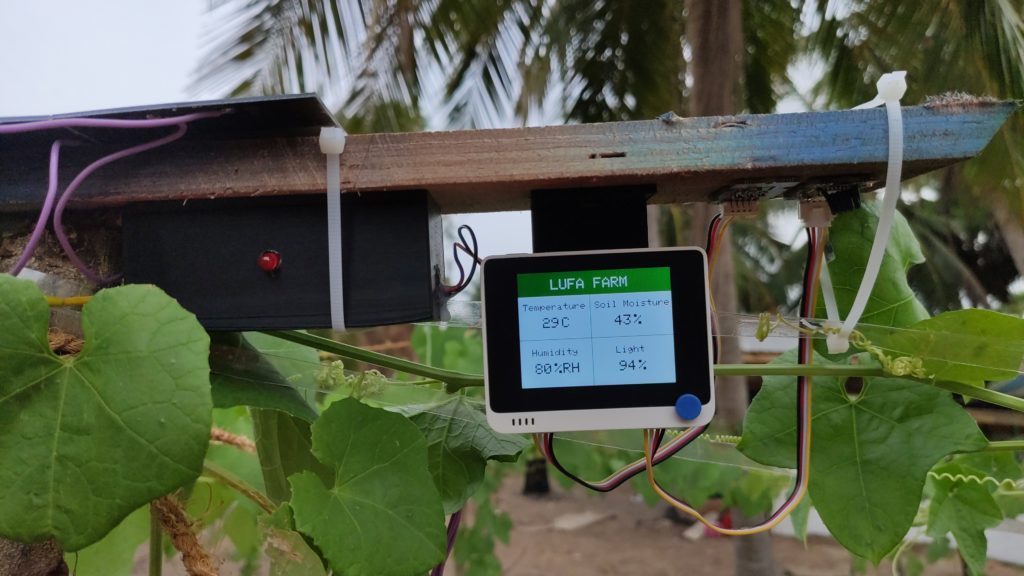
Project Description
After scouting through the surroundings of DreamSpace Hive, I came across a Luffa farm and decided to make it ‘IoT-enabled” by hooking up several environmental sensors such as a temperature/ humidity sensor, soil moisture, and a light sensor to an Arduino-based microcontroller (Wio Terminal). Then came the challenge of sending this sensor data to the cloud for visualization. Since communicating via WiFi means you have to deploy the sensors within somewhat close proximity to a WiFi router, the other option was to use GSM. However, I went with using LoRa because it enables communication over very long distances. The sensor data from the sensors were sent to the cloud via a LoRaWAN gateway and the data was visualized on a dashboard. Also, the entire outdoor system was powered by solar.
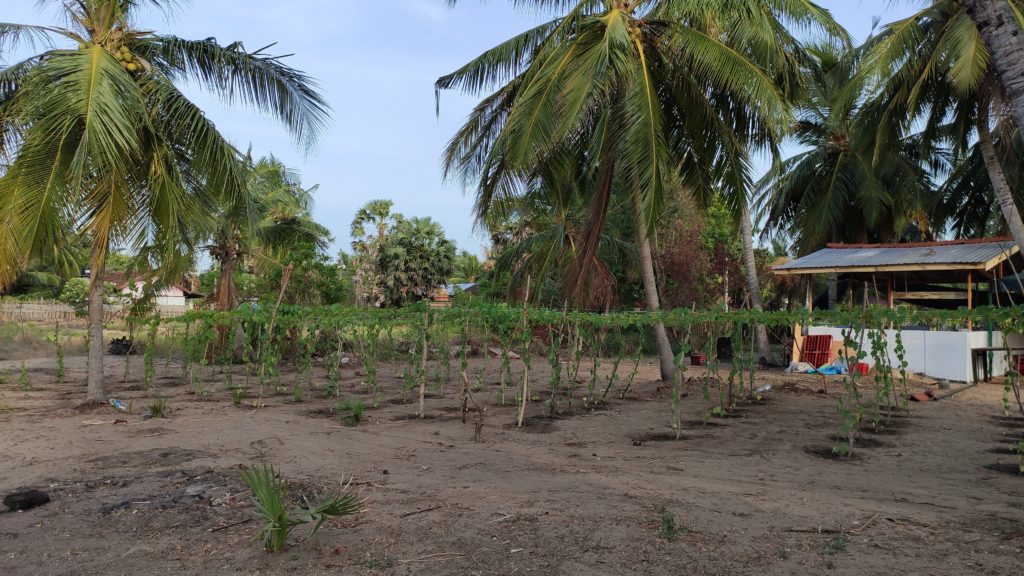
I set up a SenseCAP M2 LoRaWAN Gateway inside the DreamSpace Hive and was able to receive enough signal strength for the sensors that were set up in the Luffa farm which was located a little bit far away from the gateway. Also, this meant anyone at Dinacon was able to experiment with their own LoRa nodes by connecting with this gateway.
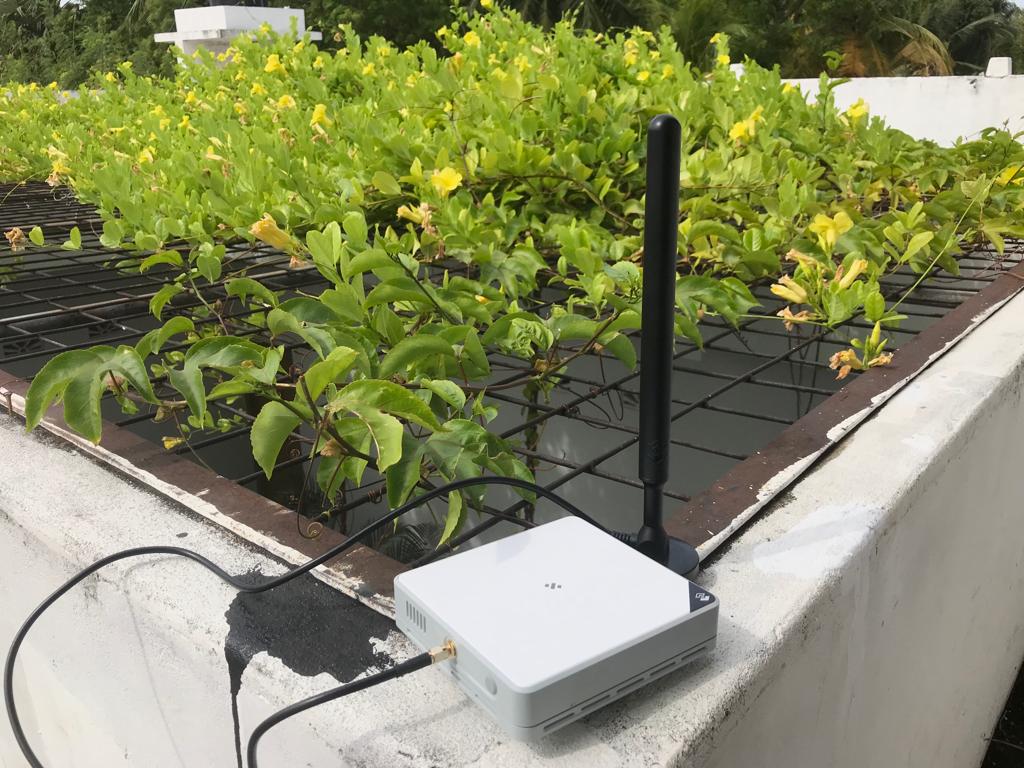
Making Process
First of all, I had to make my project powered on all day long but there was no power outlet near the Luffa farm. So the only option to power it continuously was to use solar. So I hooked up 6 small solar panels (5V/100mA each)
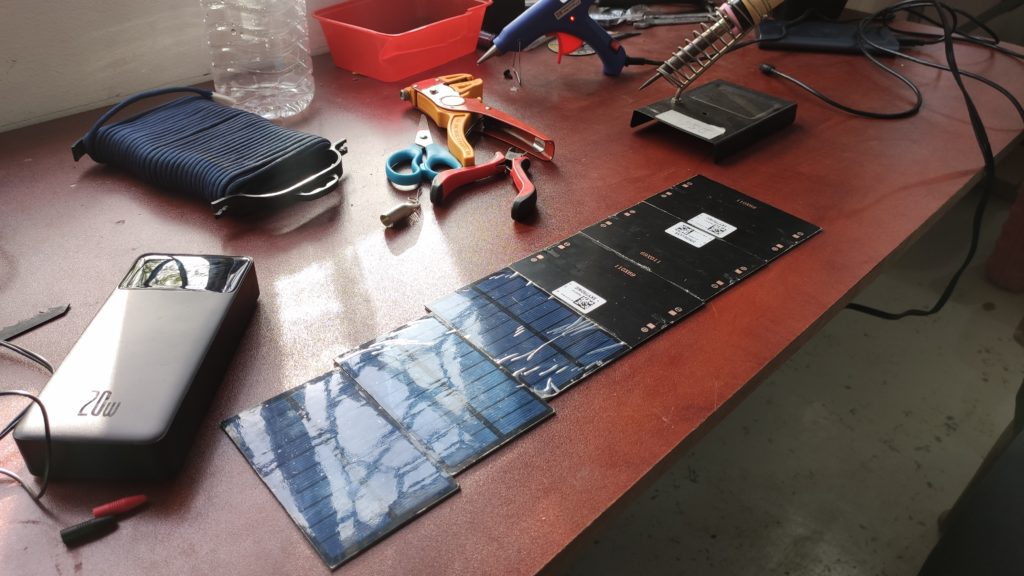
All the solar panels were connected in parallel to obtain a total power of 5v/600mA
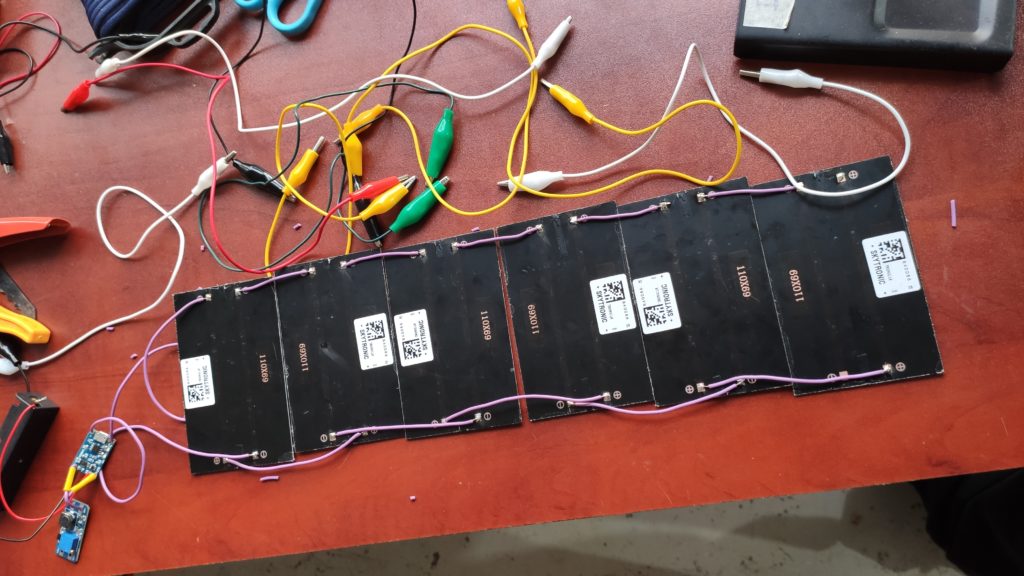
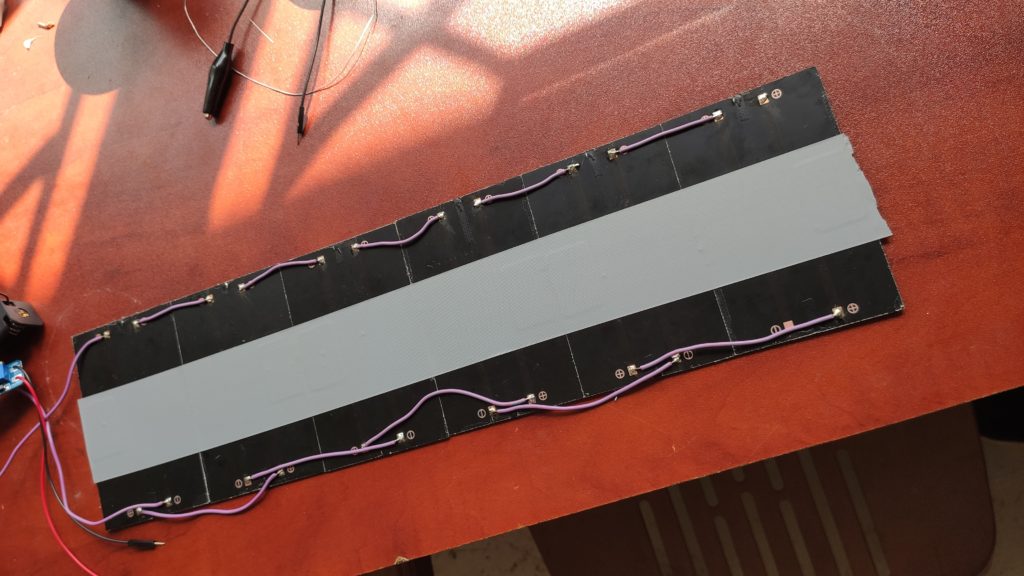
After that, I prepared a simple circuit with a TP4056 battery charger, a 18650 battery, and an MT3608 DC-DC Step-Up Converter. The idea was to connect the 18650 Lithium-ion battery to the TP4056 battery charger and connect the solar panel to the TP0456 so that the solar panel will be able to charge the 18650 battery. Also, an MT3608 DC-DC Step-Up Converter was used to keep the output voltage at 5V because the goal was to power the Wio Terminal using a regulated 5V input supply. After testing, I found out that even if the input to this converter changes from 2.7V – 4.2V, the output stayed at 5V. 2.7V is the voltage at which the TP4056 will cut off the battery from discharging and 4.2V is the fully charged state of the battery.
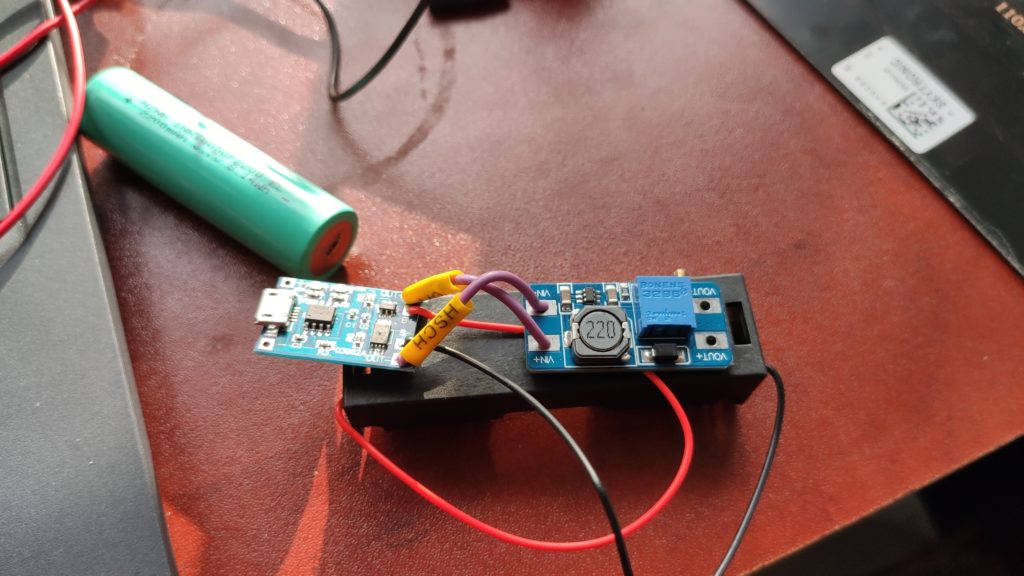
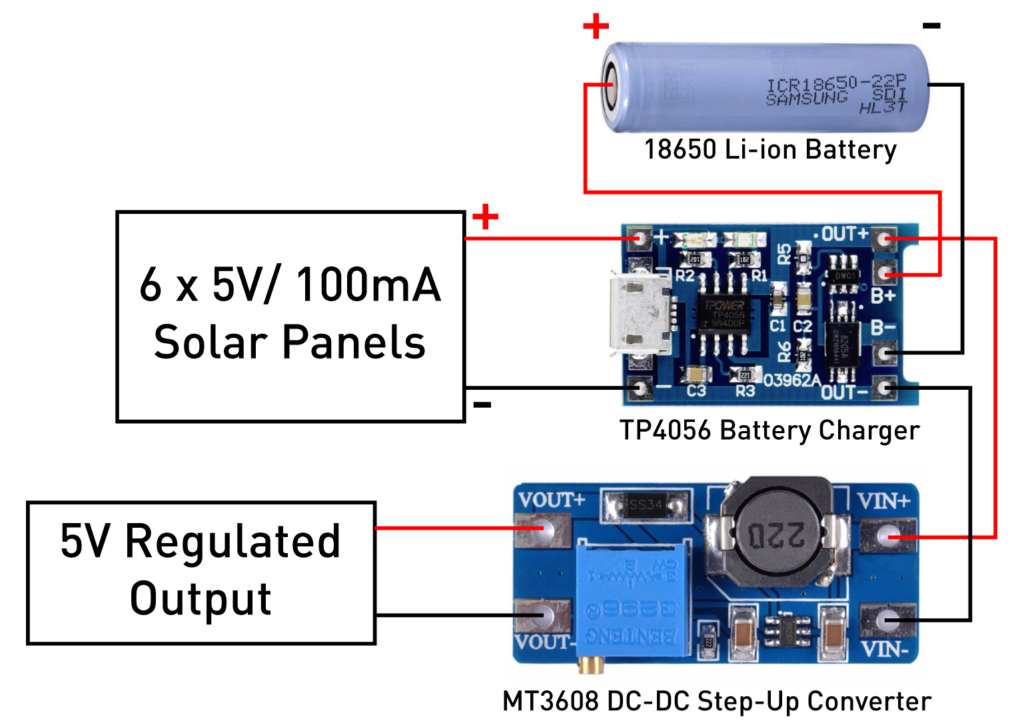
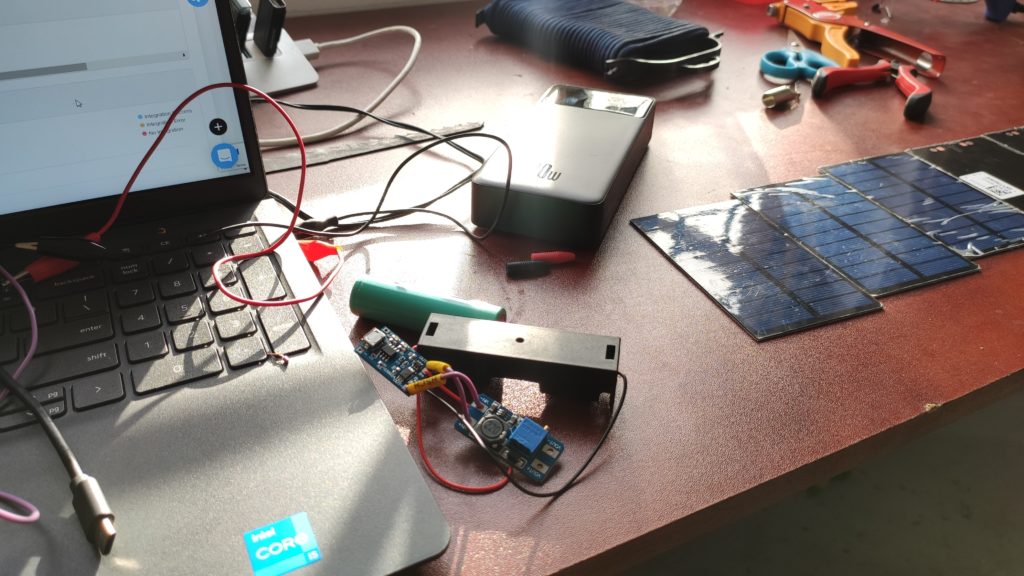
After soldering all the connections, I had a finished circuit. However, I thought of having an enclosure for this as well since it will be exposed outside. So I designed a simple box with a cover using Fusion 360 and 3D printed it!
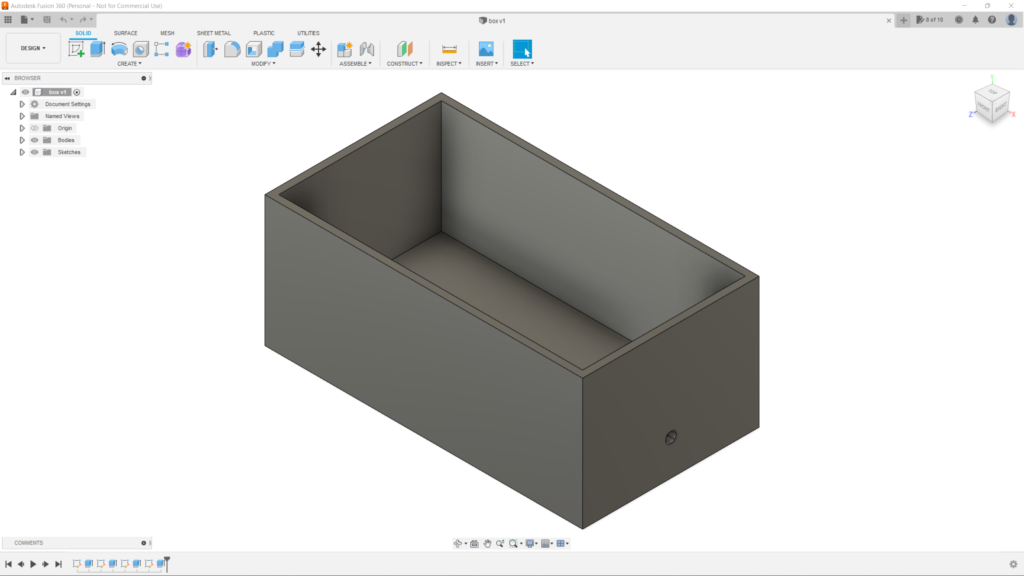
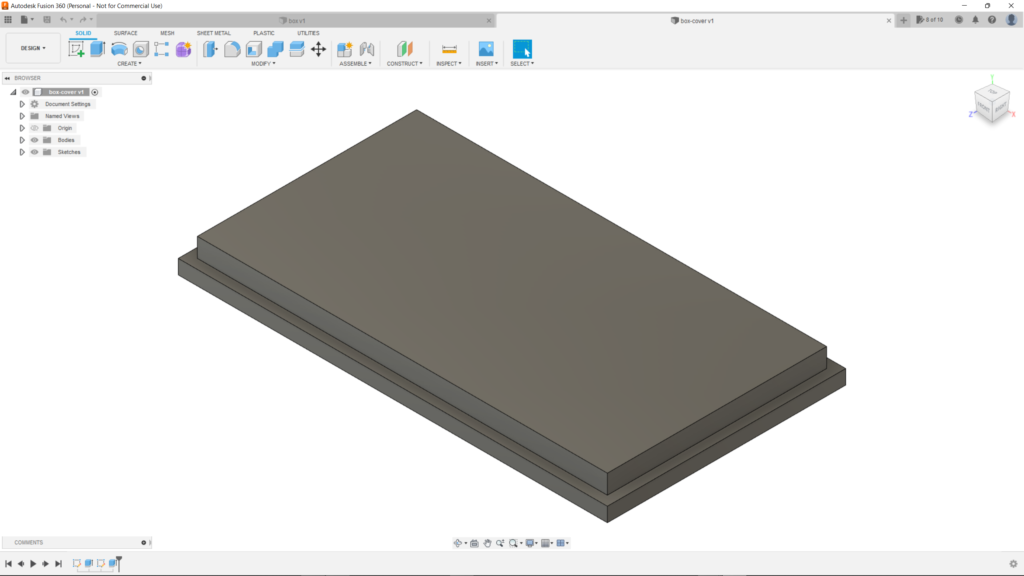
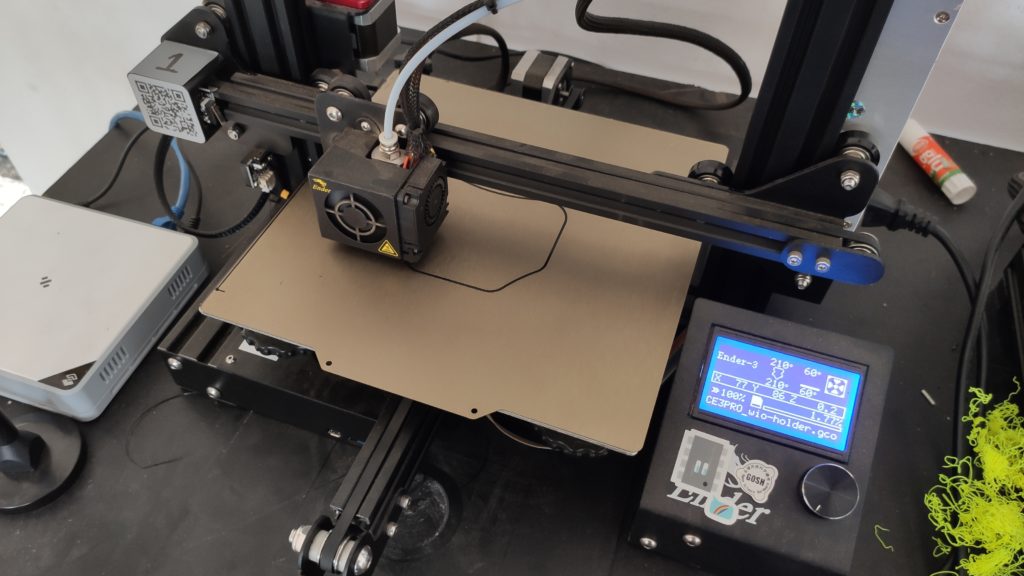
Also, I had to 3D print a small hanging structure for the Wio Terminal to hang from the wooden plank.
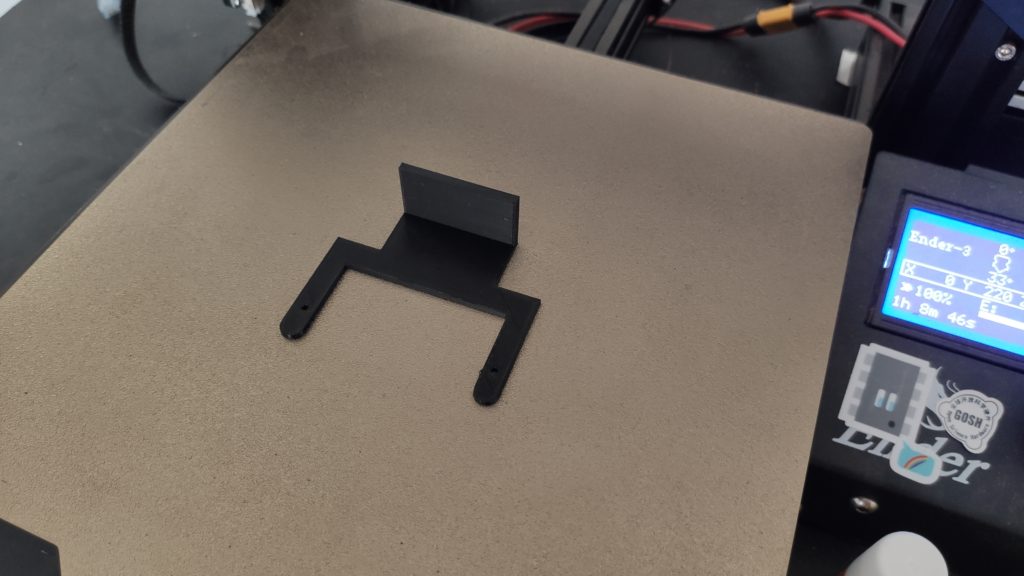
After the box was printed, I placed my connected circuit inside the box. Also, the inbuilt charge indicator LED on the TP4056 board was replaced by a bigger LED which is exposed outside to clearly check the charging status of the battery.
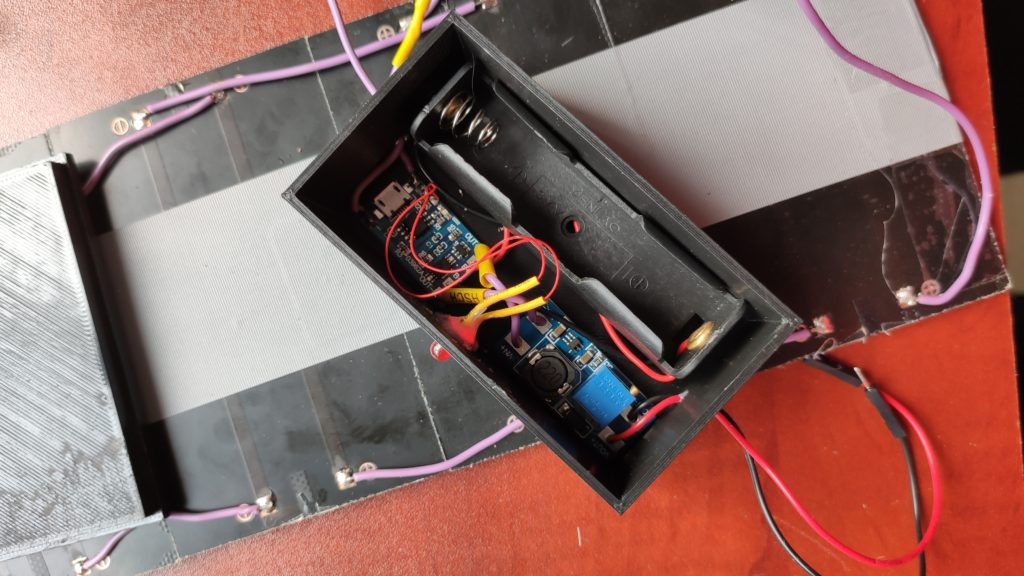
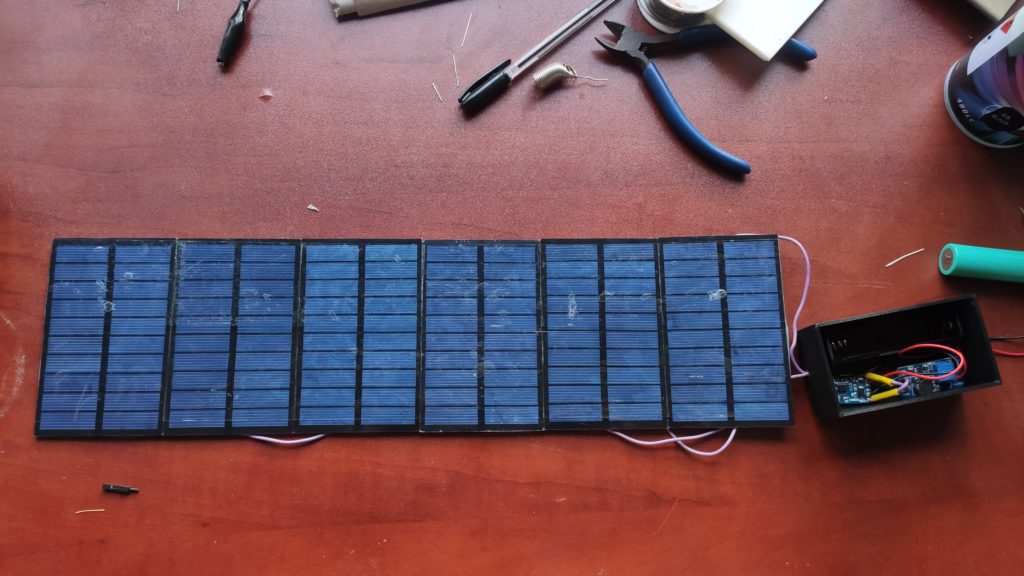
The battery was installed afterward
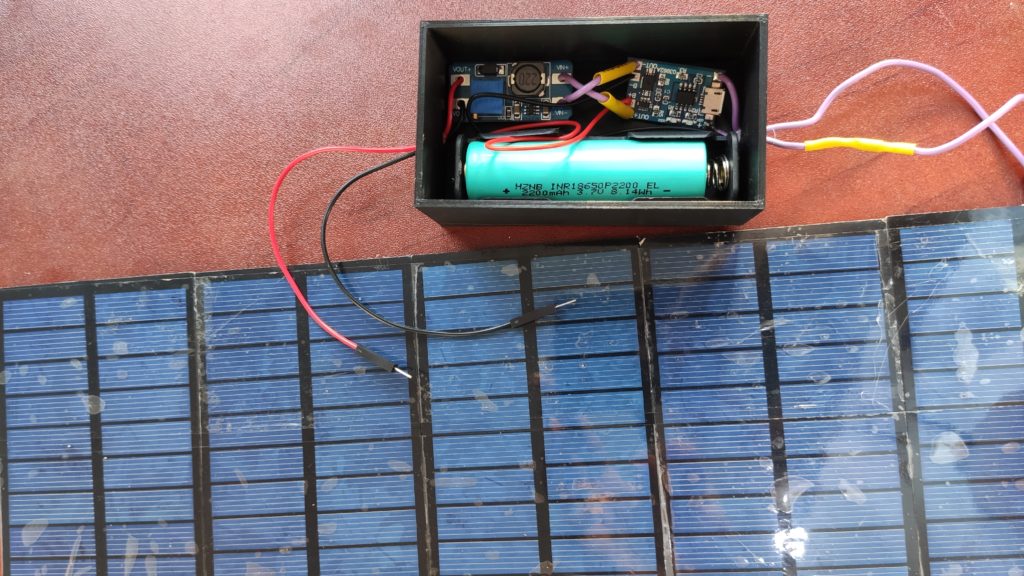
The regulated 5V output from the circuit above was connected to the 5V pin of the Wio Terminal
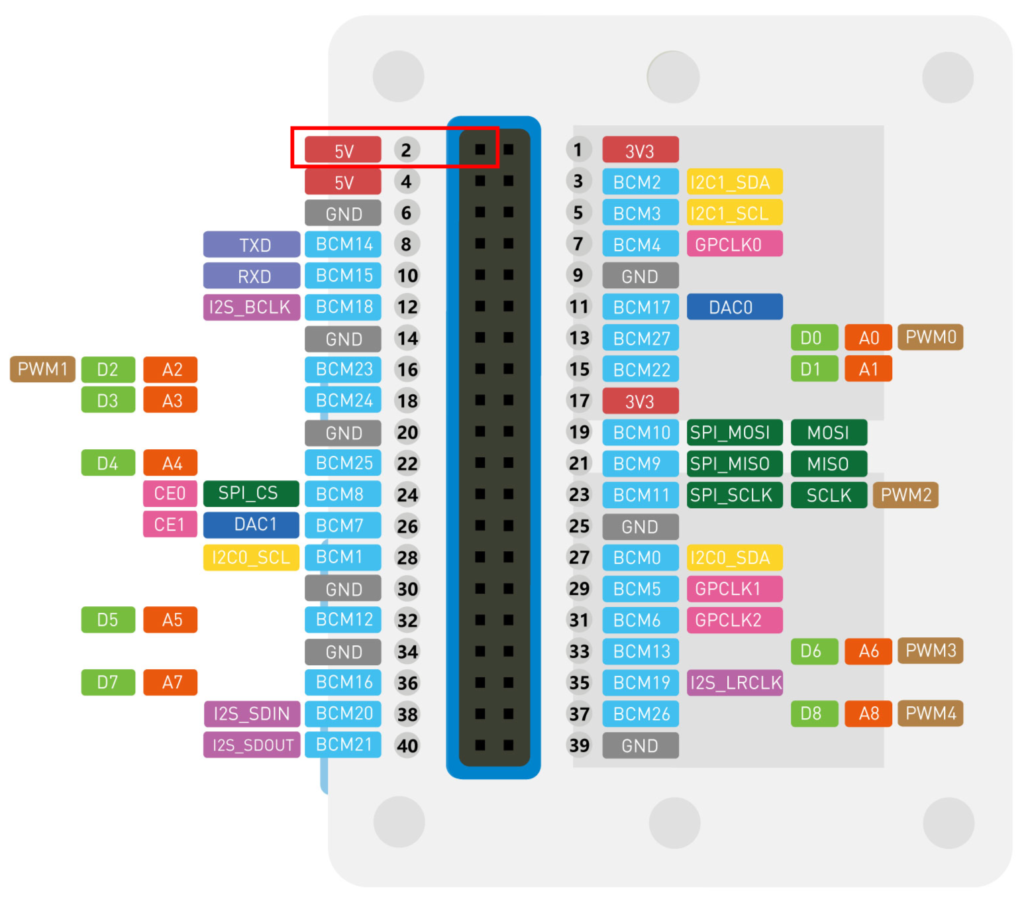
Then the connected output from the MT3608 was connected to a Wio Terminal which was also connected to a temperature and humidity sensor, LoRa transceiver, and a soil moisture sensor. After doing a little bit of programming, the entire system was deployed at the Luffa farm.
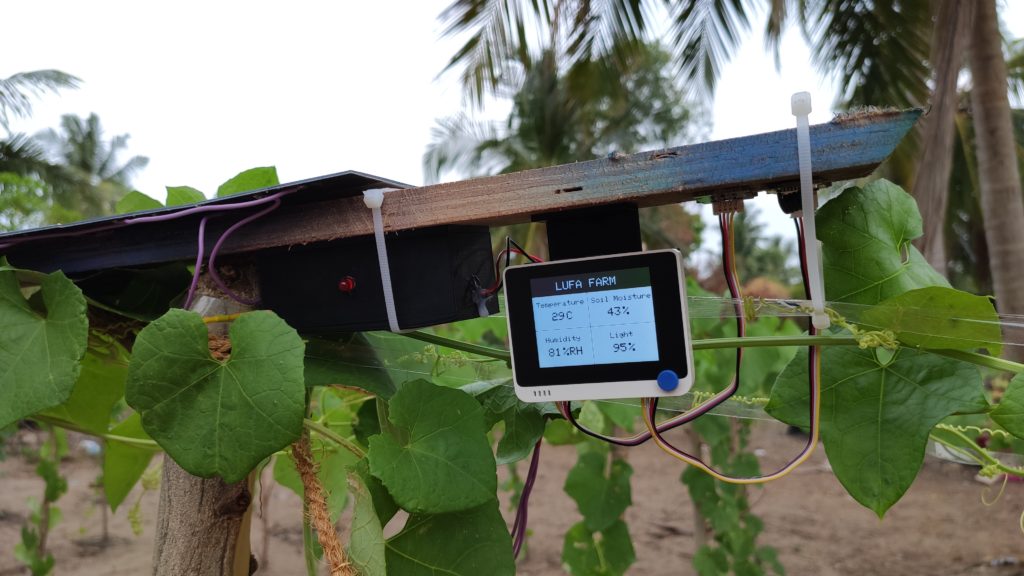
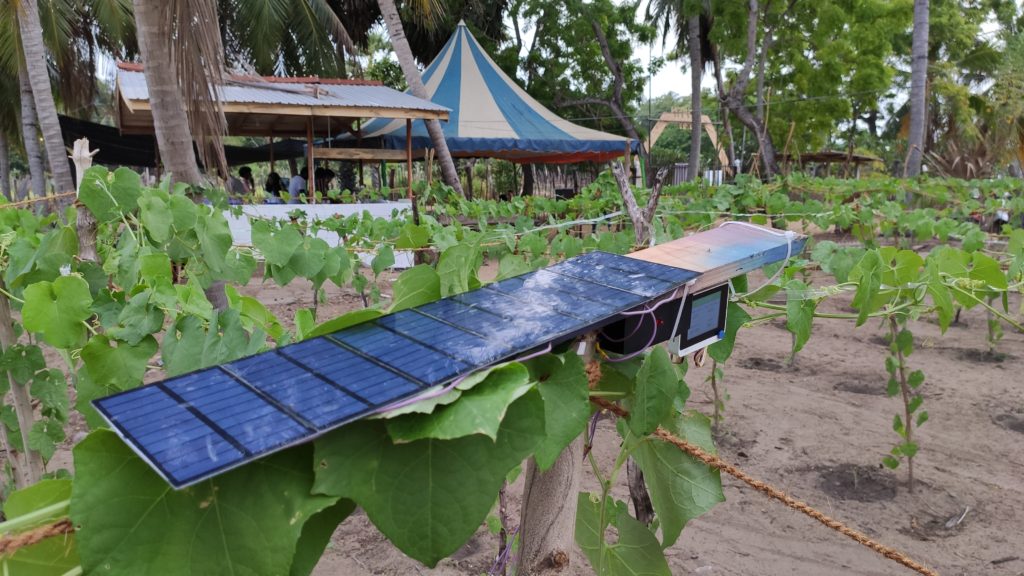
Finally, all the data from sensors were sent to the LoRaWAN gateway setup at DreamSpace and then that data was pushed to the Helium LoRaWAN network server. After that, the data was sent to Azure IoT Central to easily visualize on graphs!
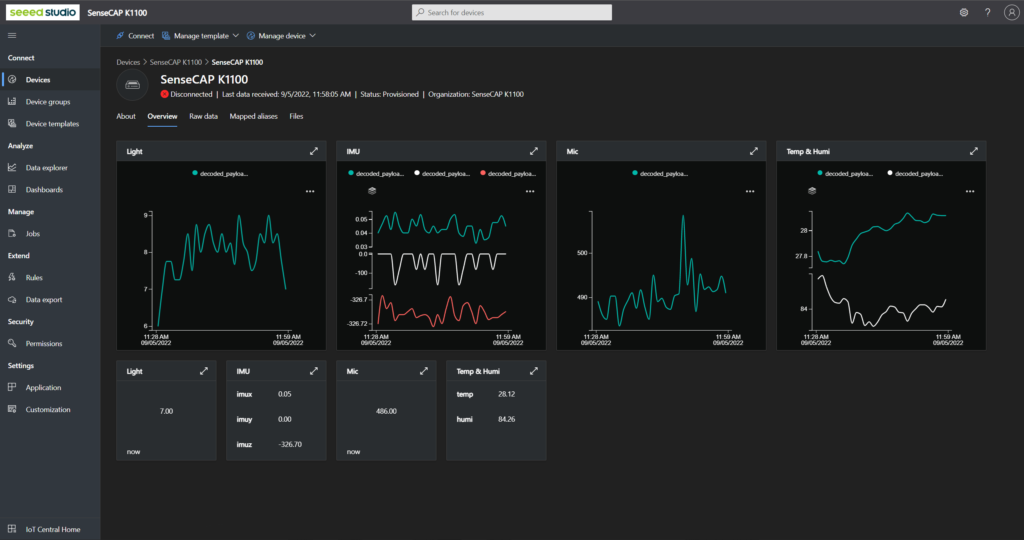
LoRaWAN with Arduino Workshop
I also conducted a workshop to teach about how to use a microcontroller, connect environmental sensors, code using Arduino and send sensor data to a LoRaWAN gateway!
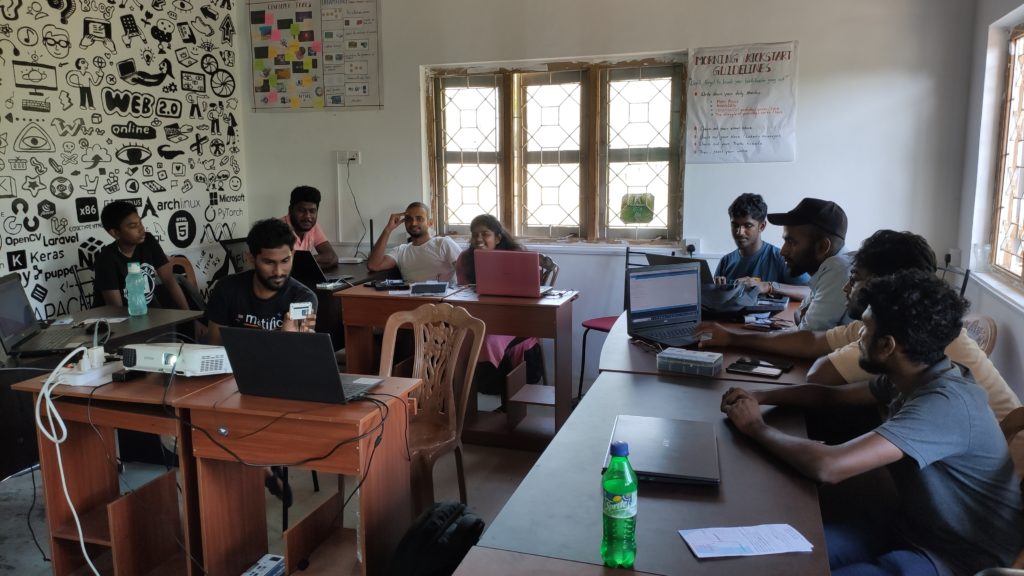
For this workshop, I used a SenseCap LoRaWAN Dev Kit in combination with a SenseCap M2 LoRaWAN gateway and taught the attendees how to use the Wio Terminal (Arduino-based microcontroller) to view the data from a connected temperature and humidity sensor on the in-built LCD, send the obtained data to the SenseCAP M2 LoRaWAN gateway and then to the Helium LoRaWAN network sever to visualize the data on dashboards!
